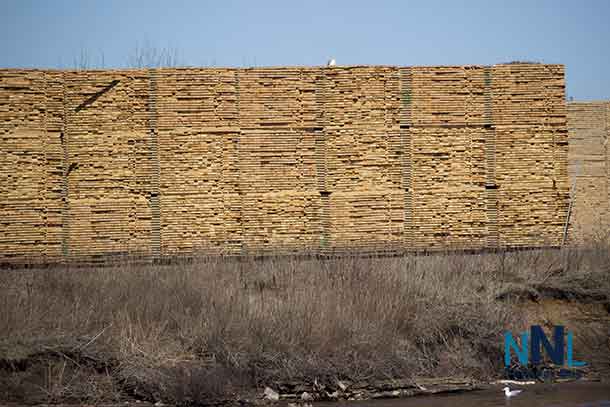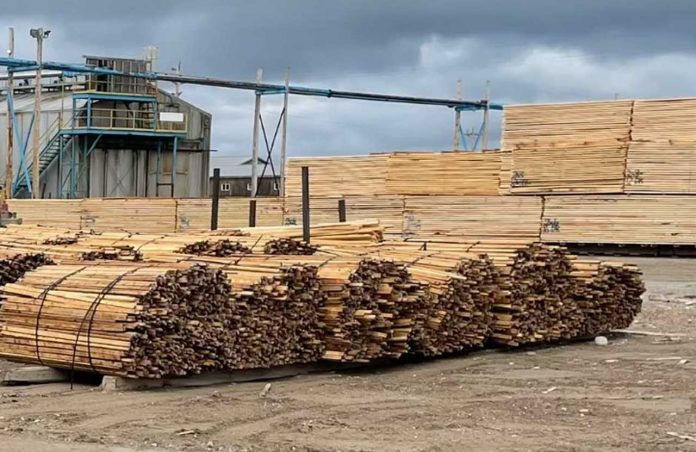Thunder Bay – LIVING – As cooler temperatures start hitting our days, people start planning their fall and winter activities.
As woodworkers gear up for their winter projects, they find themselves contemplating the future of lumber prices in Canada.
People looking to build or buy a new home are also looking closely at the price of lumber, especially softwood lumber. Construction projects including homebuilding are impacted greatly by the price of lumber.

After experiencing unprecedented highs during the Covid-19 pandemic, the price of lumber has started to decline.
A basic 2×4 stud went up as high as $12 during the pandemic but has settled back to about $4 on average.
However, what can we expect in the coming months? Will lumber prices stabilize or continue to fluctuate?
Let’s delve into the factors that may influence the price of lumber and wood in Canada over the next six months.
Current Trends
During the pandemic, lumber prices skyrocketed due to reduced production and increased demand from both DIYers and home builders.
However, in recent times, prices have started to decrease, attributed to higher interest rates and a slowing housing market.
Although experts predict a gradual decline, lumber prices are not expected to return to pre-pandemic levels anytime soon.
Factors Influencing Lumber Prices
- Housing Market Conditions: The housing market plays a crucial role in determining lumber prices. As more construction projects are completed and lumber inventory increases, the demand is likely to decrease. However, the impact on the real estate market remains uncertain.
- Interest Rates: Higher interest rates can discourage potential homebuyers, affecting the demand for lumber and wood products. The combination of inflated prices of existing homes and higher interest rates may pose challenges for first-time homebuyers.
- Supply and Production: The supply of lumber and wood products heavily influences prices. Factors such as transportation disruptions, labor shortages, and government policies can impact the supply chain and subsequently affect prices.
Will Wildfires Impact Lumber Prices this Fall?
The historic fires in Alberta and Quebec have dealt a blow to softwood lumber production, forcing evacuations and temporary closures of mills. As Canada supplies around 80% of US softwood lumber imports, the fires are likely to affect lumber availability and affordability in the US as well.
Wildfires can temporarily boost lumber prices as supplies are constrained and buyers increase inventories, although prices tend to revert later. With several months of wildfire season remaining, weather conditions are expected to fuel more wildfires throughout the summer.
What is Happening with Baltic Birch Plywood?
The supply of Baltic birch plywood in Canada is uncertain due to geopolitical issues and complex supply chains.
The conflict between Russia and Ukraine, as well as trade tensions between the US and other countries, have affected the supply of this type of plywood.
Additionally, many suppliers of Baltic birch plywood are based in Europe, and the tariffs and trade restrictions imposed by the US government have further complicated the availability of this product.
As a result, there may be a shortage and challenges in sourcing Baltic birch plywood in Canada.
Predictions for the Next Six Months
While it is challenging to predict with absolute certainty, considering the current market conditions and expert opinions, the following scenarios are likely to unfold regarding lumber prices in Canada over the next six months:
- Gradual Decline: Experts expect lumber prices to gradually decrease in the coming months. As more construction projects are completed and lumber inventory increases, the supply is likely to catch up with demand, leading to a decline in prices.
- Stabilization: Once the decline in prices reaches a certain point, lumber prices are expected to stabilize. This stabilization will provide relief to DIYers and home improvement consumers, making lumber more affordable for their projects.
- Continued Volatility: While a decline in prices is anticipated, it is important to note that the lumber market can be influenced by various unpredictable factors. Economic changes, climate events, and global market conditions can all contribute to price volatility.
Conclusions
As woodworkers plan their winter projects, the future of lumber prices in Canada remains a topic of interest. After witnessing historic highs during the pandemic, lumber prices have started to decline
However, the market is not expected to return to pre-pandemic levels soon
Factors such as housing market conditions, interest rates, and supply and production will play key roles in determining the future trajectory of lumber prices in Canada. While a gradual decline and stabilization are anticipated, the market may continue to experience volatility.
Woodworkers and consumers may need to stay informed and adapt their plans accordingly as they navigate the evolving landscape of lumber prices in Canada.







